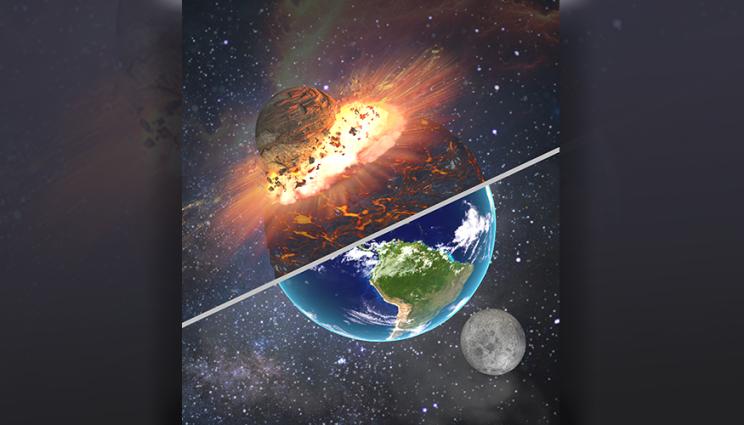How did Earth get its water? Moon rocks suggest it might have been here all along.

The water that Earth has may have been here since the planet formed, and not delivered later by collisions with icy comets, a new study finds.
The research analyzed moon rocks brought to Earth by the Apollo program and may shed light on our planet's earliest days. Although more than 70% of Earth's surface is covered in water, overall our planet is actually relatively poor in water and other volatile molecules compared with most other bodies in the solar system, study lead author Lars Borg, a planetary scientist at Lawrence Livermore National Laboratory in Livermore, California, told Space.com.
Scientists have long debated how Earth came to possess the water it does have. Two major scenarios prevail, and both involve ancient cosmic impacts, the most notorious of which saw the proto-Earth collide with a Mars-size rock dubbed Theia that helped give birth to the moon, Borg said.
Related: Ancient impact that formed Earth's moon was likely a one-two punch
In the first scenario, "the Earth is born dry and inherits its water through the addition of material from water-rich bodies such as comets and primitive meteorites," Borg said. "In the second scenario, the Earth forms with volatile element abundances that are similar to the average solar system, but loses most of them during the giant impact that formed the moon."
To help solve this mystery, scientists analyzed rocks from the moon collected during the Apollo missions. The researchers focused on levels of rubidium-87, which is volatile and radioactive, and strontium-87, the stable product of its radioactive decay.
The researchers found that levels of strontium-87 were relatively low in lunar highland rocks that crystalized around 4.35 billion years ago, suggesting that levels of rubidium-87 and other volatiles were similarly low in Earth and the moon when they formed. But that conclusion contradicts both of the major theories for how Earth got its water.
Get the Space.com Newsletter
Breaking space news, the latest updates on rocket launches, skywatching events and more!
"Our work suggests that the Earth and moon formed with about the same amounts of volatile elements as they have today," Borg said. "This does not mean that no water was added to Earth by comets and meteorites, but simply that the majority of water was inherited from the materials that Earth and moon formed from."
These findings suggest that both Theia and the proto-Earth were strongly depleted in volatile compounds before the massive collision. This in turn hints that both bodies formed in the inner solar system relatively late in the solar system's history, after 4.45 billion years ago, when the young sun's heat would have baked many of the volatiles out of these bodies, the researchers said.
These findings may also help explain other mysteries regarding the origin of the Earth and moon. "These include explaining the baffling observation that Earth and the moon have similar oxygen, chromium, and titanium isotopic compositions when most formation models predict they should be different," Borg said.
In the future, these new findings may help researchers better model the giant impact that helped create Earth and the moon. For instance, knowing both Theia and the proto-Earth came from the inner solar system "may place some additional constraints on the relative velocities of these bodies," Borg said.
The scientists detailed their findings online Feb. 14 in the journal Proceedings of the National Academy of Sciences.
Follow us on Twitter @Spacedotcom and on Facebook.
Join our Space Forums to keep talking space on the latest missions, night sky and more! And if you have a news tip, correction or comment, let us know at: community@space.com.

Charles Q. Choi is a contributing writer for Space.com and Live Science. He covers all things human origins and astronomy as well as physics, animals and general science topics. Charles has a Master of Arts degree from the University of Missouri-Columbia, School of Journalism and a Bachelor of Arts degree from the University of South Florida. Charles has visited every continent on Earth, drinking rancid yak butter tea in Lhasa, snorkeling with sea lions in the Galapagos and even climbing an iceberg in Antarctica. Visit him at http://www.sciwriter.us









